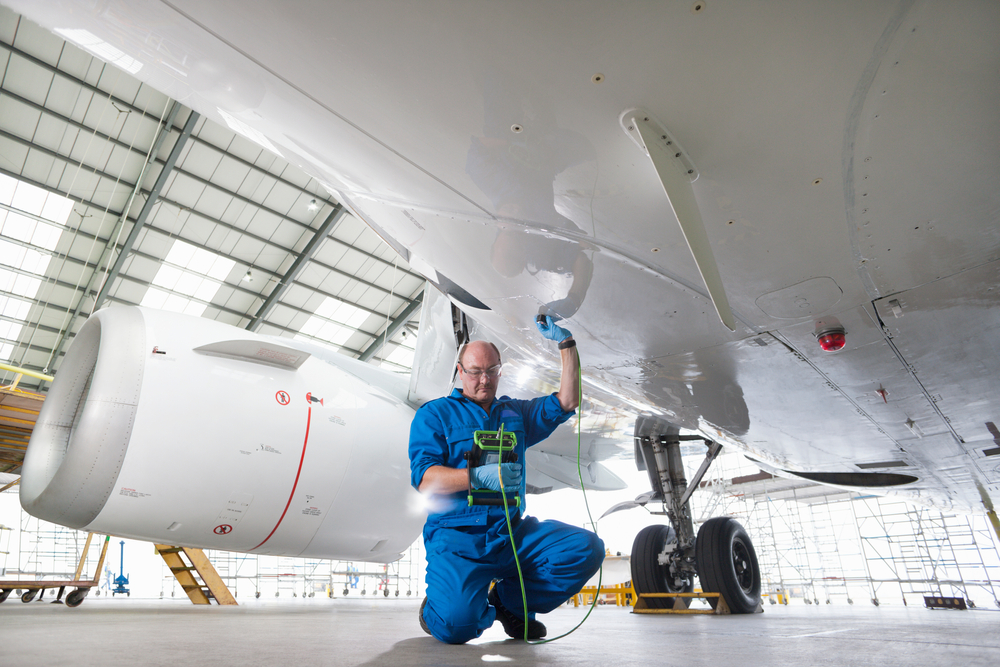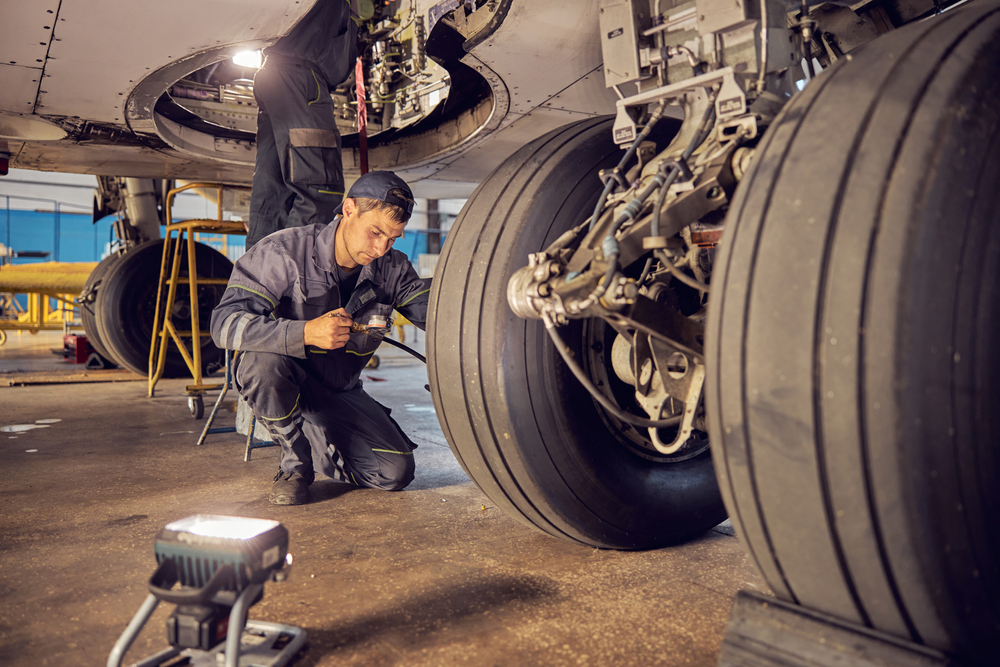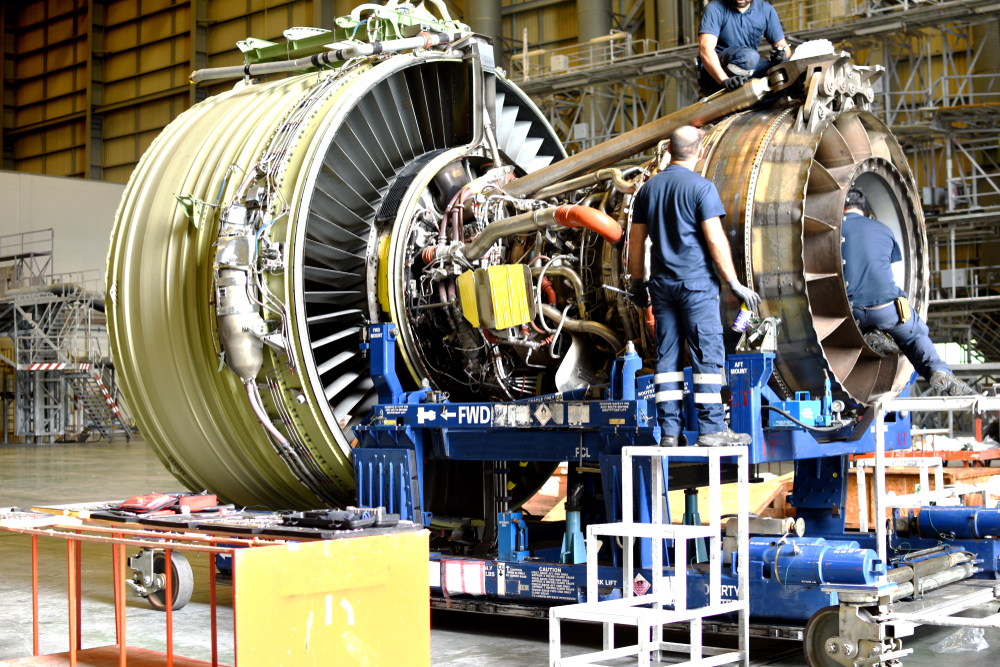A career as an aircraft mechanic is a rewarding opportunity to work in aircraft maintenance and ensure the safety of airline operations. If you are ready to take off on this path, the first thing you need to know is the licensing process. Requirements vary depending on where you plan to work. Whether you are aiming to start your aviation mechanic career in the US, Canada, or Europe, each region has its own rules, certifications, and steps to follow.
In this guide, we will show you how to become an aircraft mechanic in the US, Canada, and Europe. You will get the inside scoop on the certifications you need, the hands-on experience required, and the exams you will have to pass.
Plus, we will cover the process of converting your aircraft mechanic license between regions. Wondering if you can convert your license? The answer is yes, and we will explain how. No matter where your license is from, understanding how to convert it opens up exciting career opportunities worldwide. This guide will walk you through the steps to make that transition as smooth as possible.
Table of Contents
How to start an aviation mechanic career?
Aircraft mechanics are essential in ensuring that aircraft remain airworthy. While this career is both rewarding and impactful, it requires long-term dedication to develop the necessary skills, qualifications, and experience. Here are a few key steps to help you kickstart your career as an aviation mechanic:
- Complete an introductory course. First, you should take an introductory course which covers aircraft engineering, ground operations, electrical systems, turbine engines, safety protocols, and regulations.
- Gain hands-on experience. Then you should join an MRO (Maintenance, Repair, and Overhaul) facility authorized by aviation authorities, where you will begin with essential tasks like aircraft cleaning and fluid replenishment. As you gain experience, you will have the chance to move on to more advanced duties, such as performing minor repairs, replacing non-structural cabin components like seats or carpets, and handling tire replacements.
- Advance your skills and responsibilities. Gain experience over time to handle more complex maintenance tasks.Then you should obtain a specific level of licensure to perform significant repairs and maintenance tasks.
How to become an aircraft mechanic in the US?
If you are aiming to become an aircraft mechanic in the US, the first step is to familiarize yourself with the basic requirements set by the FAA for aspiring mechanics. Here are the key requirements you should follow:
- Entrants into the MRO sector must be at least 18 years old.
- While formal education is not always mandatory, it is preferable.
- A high school diploma or an equivalent qualification is often required.
- Entrants must enroll in an FAA-approved aviation maintenance technician program.
- Entrants must pass the FAA’s written, oral, and practical exams.
- These exams evaluate understanding of aircraft maintenance, safety protocols, and regulations.
- After passing exams, entrants receive an FAA Airframe and/or Powerplant (A&P) certificate.
- These certifications grant the authority to legally work on aircraft.
In the US, aircraft mechanic licenses are divided into two main categories. These are Airframe & Powerplant (A&P) Mechanics and Inspection Authorization (IA) Mechanics.
Here is a breakdown of how these two categories differ:
1. Airframe and Powerplant (A&P) Mechanics
A&P Mechanics can inspect and maintain aircraft structures, components, and engines for both line and base maintenance. Mechanics need at least 18 months of hands-on experience to qualify for the A&P license.
2. Inspection Authorization (IA) Mechanics
In the US, you can become a universally licensed aircraft mechanic with the ability to work on various types of aircraft. IA Mechanics, like A&P Mechanics, repair and overhaul aircraft. Additionally, IA Mechanics inspect and approve aircraft airworthiness before they can return to service. IA Mechanics must have an FAA Inspection Authorization certificate for these responsibilities.
How to become an aircraft mechanic in Canada?
Becoming an aircraft mechanic in Canada follows a path similar to the US. However, there are differences in the types of licenses. The process to obtain a license also varies, despite the basic requirements remaining the same.
Here are the essential steps and requirements to become an aircraft mechanic in Canada:
- Be at least 18 years old with a high school diploma.
- Complete a Transport Canada-approved aviation maintenance technician program.
- Follow Transport Canada’s licensing policy for working on Canadian-registered aircraft.
- Gain at least four years (48 months) of supervised practical experience.
- Obtain experience through apprenticeships or on-the-job training at approved maintenance organizations.
Similar to the US, in Canada, there are two main license categories: Aircraft Maintenance Engineer and Avionics Maintenance Engineer. These licenses are recognized by both Transport Canada and EASA. However, if someone wants to pursue a similar role in the US, they will need to go through a license conversion process.
Here is a closer look at the two categories in more detail:
1. Aircraft Maintenance Engineer (AME)
This license allows mechanics to repair and overhaul any aircraft type, including its airframe, avionics, engines, hydraulic systems, and electrical systems. The AME license has four subcategories based on specialized training and qualifications.
- Airframe AME. This subcategory focuses on the maintenance, repair, and overhaul of the structural components of an aircraft. It includes aircraft fuselage, wings, and control surfaces.
- Powerplant AME. The Powerplant AME subcategory pertains to the maintenance, repair, and overhaul of aircraft engines. It includes both piston and turbine engines.
- Avionics AME. Avionics AMEs specialize in the maintenance, repair, and installation of aircraft electronic systems and components. It includes aircraft navigation, communication, and instrumentation systems.
- Gas Turbine Engine AME. This subcategory specifically addresses the maintenance, repair, and overhaul of gas turbine engines, which are used in jet aircraft propulsion.
2. Avionics Maintenance Engineer
These mechanics focus exclusively on aircraft avionics systems.They can specialize further through two different subcategories.
- Radio Systems Maintenance Engineer. This subcategory focuses on the maintenance, repair, and installation of aircraft radio communication systems. This includes transmitters, receivers, antennas, and associated equipment.
- Instrument Systems Maintenance Engineer. The Instrument Systems subcategory pertains to the maintenance, repair, and installation of aircraft navigation and instrumentation systems. This includes altimeters, airspeed indicators, gyroscopes, and autopilot systems.
These subcategories of the Avionics Maintenance Engineer license need specialized training and qualifications. The training ensures that mechanics are skilled in maintaining and troubleshooting aircraft electronic systems and components.

How to become an aircraft mechanic in Europe?
Getting licensed in Europe might seem more complicated than in North America. To become aircraft mechanics in Europe, you must follow the regulations of the European Aviation Safety Agency (EASA) and the Civil Aviation Authority (CAA) of a particular EASA member state.
Here are the main steps to get licensed in Europe:
- The minimum age requirement is typically 18 years old.
- Obtain a high school diploma or equivalent qualification.
- Enroll in and complete an EASA approved aircraft maintenance training program.
- Gain practical experience through on-the-job training at an approved maintenance organization.
- Pass the required EASA examinations to obtain an Aircraft Maintenance License (AML).
To work on EU-registered aircraft, a person must first obtain a basic Aircraft Maintenance License (AML) without a specific aircraft type rating. After gaining comprehensive maintenance knowledge and practical experience, they can then choose to specialize in a particular aircraft type.
The AML is divided into three main categories. Each category is further subdivided into smaller classifications. These subcategories define the skill levels of aircraft mechanics and set specific limitations on their daily work routines.
Let’s take a look at the differences between the AML categories:
1. Category A
The EASA Category A aircraft mechanic license allows individuals to perform basic line maintenance tasks on aircraft. This includes routine inspections, fluid checks, lubrication, cleaning, and minor repairs done during the aircraft’s turnaround. License holders are trained to troubleshoot and fix simple defects to ensure the aircraft is safe and ready for its next scheduled departure.
2. Category B1
Category B1 license holders handle more complex aircraft maintenance tasks. This requires more hands-on experience compared to Category A mechanics.
Category B1 mechanics mainly handle base maintenance, which involves extensive repairs and overhauls following OEM and operator maintenance programs. This involves fixing problems with the aircraft’s structure, engines, and mechanical and electrical systems. These tasks are done in a hangar or workshop and can take from a few days to several months. Category B1 holders can also approve maintenance done by less experienced personnel.
3. Category B2
According to EASA regulations, individuals with a B2 license specialize in jet avionics. This includes flight control systems like autopilot, communication, and navigation. The license allows mechanics to maintain and overhaul avionics systems, especially during heavy checks. B2 license holders can also certify some of the work they complete, ensuring it meets regulatory standards and airworthiness requirements.
4. Category C
The Category C license is an advanced certification for highly skilled aircraft mechanics. Mechanics with a Category C license play important roles in both line and base maintenance checks. They are authorized to perform thorough inspections and sign the Certificate of Release to Service (CRS). This document confirms that all maintenance work complies with strict regulations, ensuring the aircraft’s safety.
Can you convert an aircraft mechanic license?
Aircraft mechanic licensing procedures differ significantly between North America and Europe. In the US, the licensing process is quicker, requiring less time for mechanics to become licensed. In the meantime, obtaining a license in Europe is more complex and involves a more detailed process.
For example, the FAA requires individuals to have 18 months of experience to get the A&P license. In contrast, EASA requires at least three years of practice for a non-type-rated AML. The A&P license allows mechanics to work on different aircraft types universally. EASA, however, mandates mechanics to obtain a type rating for a specific aircraft in addition to the non-type-rated AML.
How can you convert an EASA license to an FAA license?
Once someone holds a valid EASA-issued AML with a type rating, they can convert it to the FAA-approved A&P license. To do this, they must verify at least 18 months of previous experience. Additionally, an inspector from the US aviation regulator will require them to pass several exams: written, oral, and practical checks.
How can you convert an FAA license to a Transport Canada license?
Transport Canada presents challenges for those converting their licenses. You can only convert an aircraft mechanic license directly if it’s issued by a country with a bilateral agreement with Canada. Without such an agreement, conversion isn’t an option.
If an aviation mechanic holds an A&P license issued by the FAA and wants to work in Canada, they must apply for a Canadian AME license through Transport Canada. This process involves demonstrating that their qualifications align with Canadian regulatory standards. They need to provide documentation of their education and work experience. Additionally, they may have to undergo additional training and pass required exams and assessments.
Without meeting these requirements, the conversion to a Canadian AME license is not possible.
In the US, Canada, or Europe, grasping the specific requirements and processes is essential. Each region boasts its unique licensing categories and procedures, encompassing hands-on experience, education, and exam success. Don’t let challenges deter you from pursuing this fulfilling career. With advanced skills, it promises significant rewards!

Becoming an aircraft mechanic in the US, Canada, or Europe requires understanding the specific licensing requirements in each region. The journey may be complex, but with dedication, you can build a rewarding career. Are you curious if becoming an aircraft mechanic is the right choice for you? Take a look at this article, where we answer that question clearly. And if you are still unsure about the future for maintenance professionals, this article is for you too. Do you already hold an aircraft mechanic license and are now looking for a new job in the field? Check out the latest job vacancies here. Best of luck on your aviation mechanic journey!

